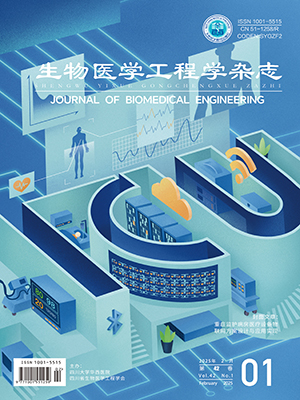Aiming at the difference between the brain networks of children with attention deficit hyperactivity disorder (ADHD) and normal children in the task-executing state, this paper conducted a comparative study using the network features of the visual function area. Functional magnetic resonance imaging (fMRI) data of 23 children with ADHD [age: (8.27 ± 2.77) years] and 23 normal children [age: (8.70 ± 2.58) years] were obtained by the visual capture paradigm when the subjects were performing the guessing task. First, fMRI data were used to build a visual area brain function network. Then, the visual area brain function network characteristic indicators including degree distribution, average shortest path, network density, aggregation coefficient, intermediary, etc. were obtained and compared with the traditional whole brain network. Finally, support vector machines (SVM) and other classifiers in the machine learning algorithm were used to classify the feature indicators to distinguish ADHD children from normal children. In this study, visual brain function network features were used for classification, with a classification accuracy of up to 96%. Compared with the traditional method of constructing a whole brain network, the accuracy was improved by about 10%. The test results show that the use of visual area brain function network analysis can better distinguish ADHD children from normal children. This method has certain help to distinguish the brain network between ADHD children and normal children, and is helpful for the auxiliary diagnosis of ADHD children.
Citation: SONG Zhiwei, LI Wenjie, BI Hui, WANG Suhong, ZOU Ling. Comparative research on brain networks of children with attention deficit hyperactivity disorder and normal children based on visual cognitive tasks. Journal of Biomedical Engineering, 2020, 37(5): 749-755, 764. doi: 10.7507/1001-5515.201912058 Copy
Copyright © the editorial department of Journal of Biomedical Engineering of West China Medical Publisher. All rights reserved
-
Previous Article
Global research hot points on cardiovascular disease--bibliometric analysis based on the ESI hot papers -
Next Article
Analysis of time-frequency characteristics and coherence of local field potentials during working memory task of rats after high-frequency repeated transcranial magnetic stimulation




